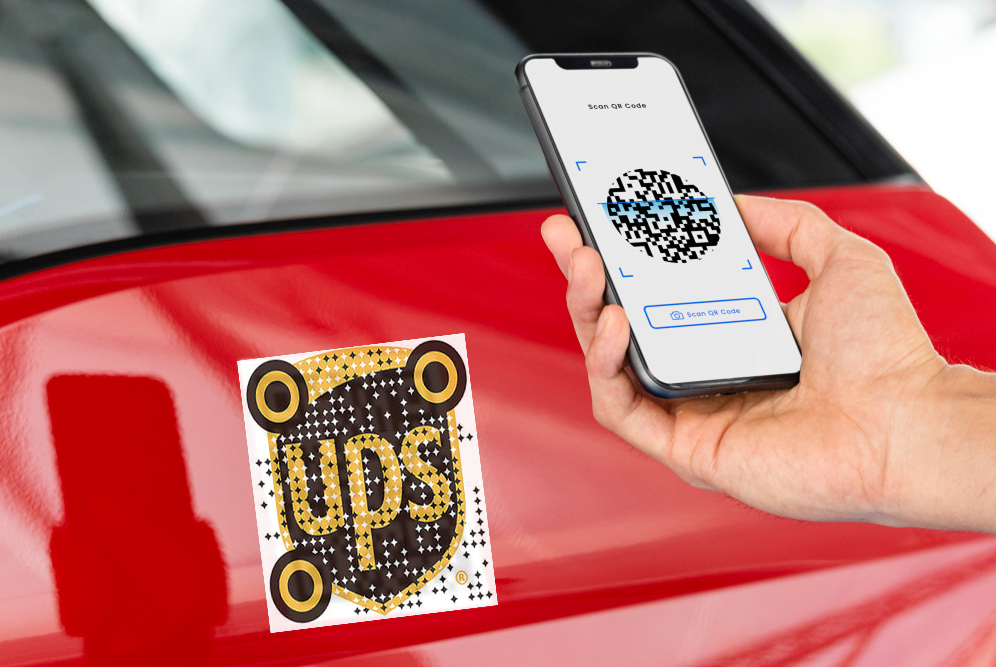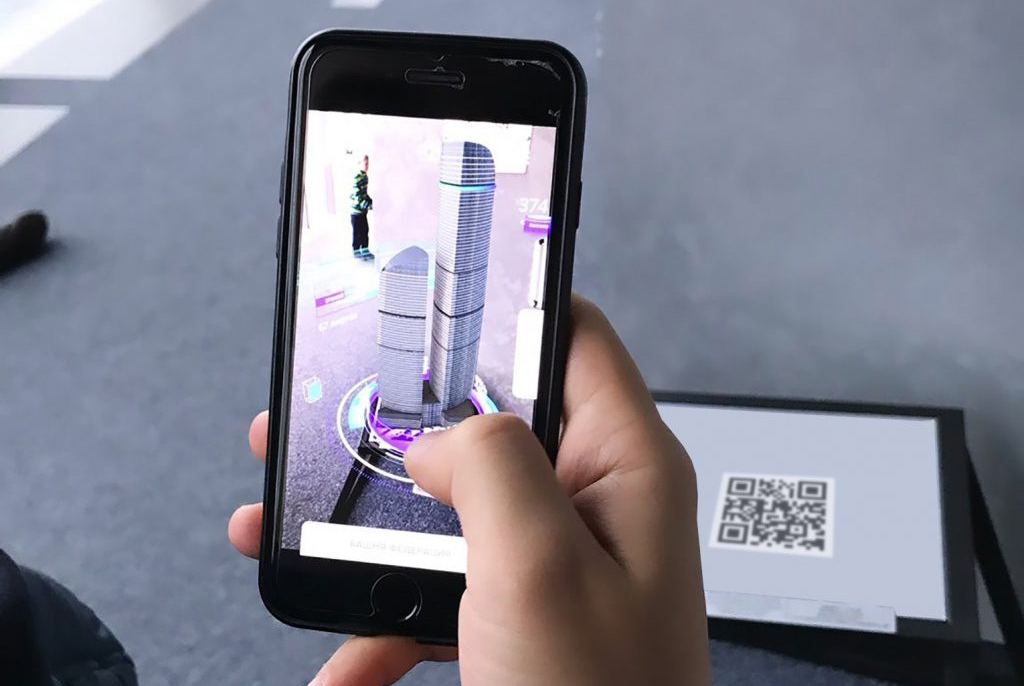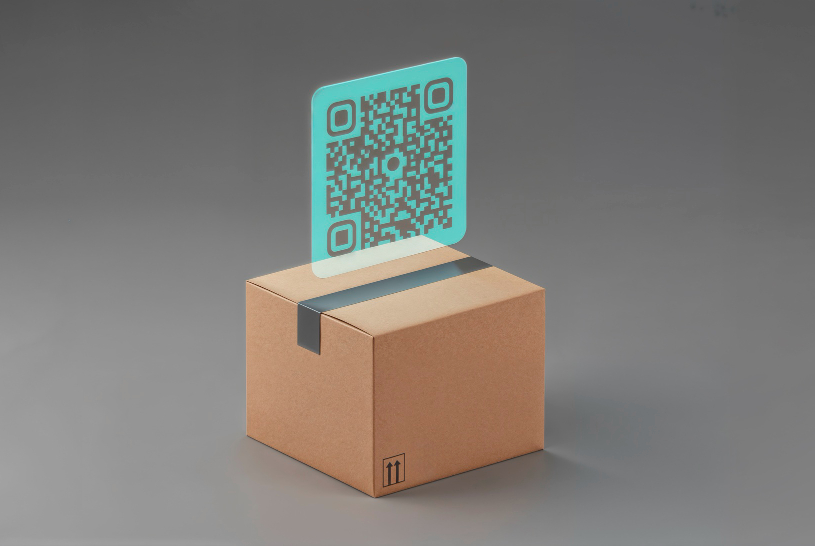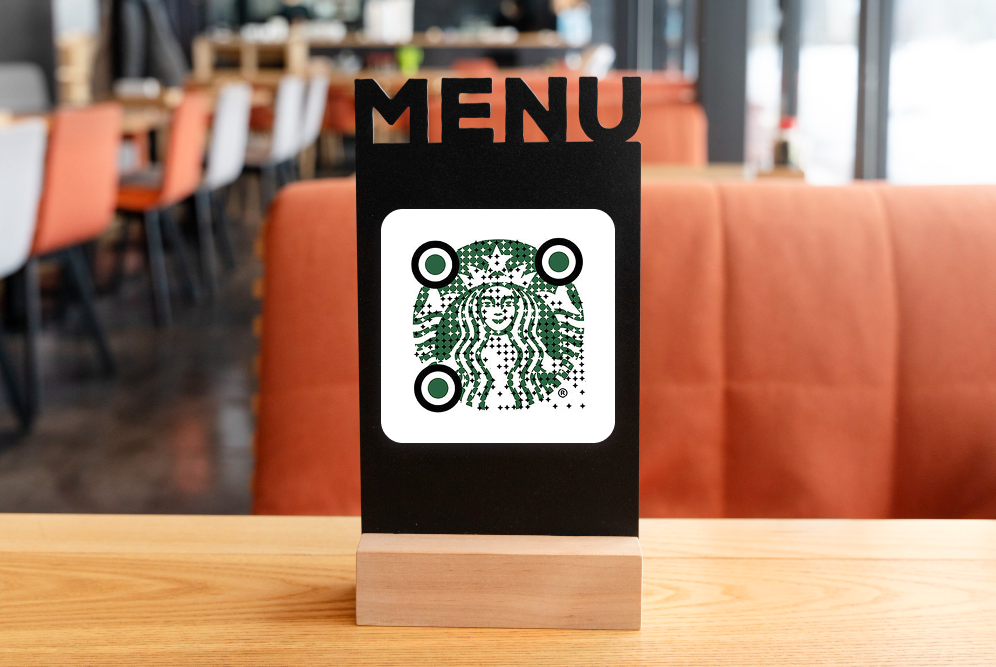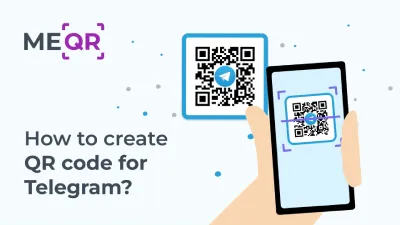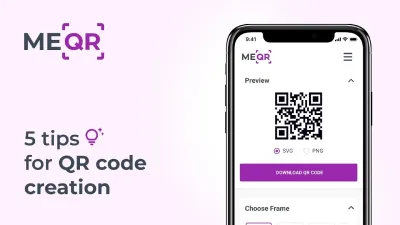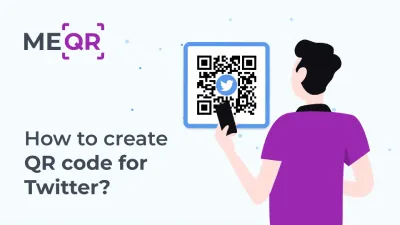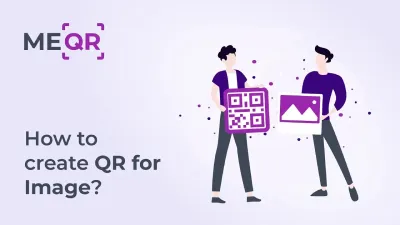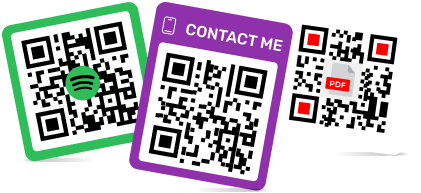إرشادات طباعة رموز QR: نصائح للحصول على نتائج مثالية
لإنشاء رمز QR لرابط أو مقطع فيديو أو صورة - انقر على الزر أدناه.

تمثل رموز الاستجابة السريعة (QR) جسرًا تقنيًا يربط بين المادي والرقمي بسلاسة. يمكن مسح هذه الرموز الشريطية ثنائية الأبعاد المدمجة ومتعددة الاستخدامات باستخدام كاميرا الهاتف الذكي، مما يوجه المستخدمين إلى عناوينURL محددة ، والصوت ، ومجموعة متنوعة من الموارد التفاعلية عبر الإنترنت.
يتطرق هذا الدليل بعمق إلى أهمية طباعة رموز الاستجابة السريعة (QR Codes)، ويسلط الضوء على استخداماتها الاستراتيجية عبر قطاعات متعددة، ويقدم إرشادات شاملة لهذا الغرض.
لماذا طباعة رمز الاستجابة السريعة؟
تشكل رموز الاستجابة السريعة جزءًا لا يتجزأ من استراتيجيات الاتصال الرقمية الحديثة، حيث تؤدي أدوارًا متعددة الأوجه تشمل على سبيل المثال لا الحصر:

- التسويق والإعلان :تعتبر رموز الاستجابة السريعة (QR code) أدوات فعالة في الحملات الإعلانية، مما يسمح للعلامات التجارية بالتواصل مع المستهلكين بشكل مباشر من خلال الربط بالعروض الخاصة وتفاصيل المنتج والمحتوى التفاعلي الذي يعزز تجربة المستهلك.
- الموارد التعليمية :في البيئات التعليمية، توفر رموز الاستجابة السريعة QR إمكانية الوصول الفوري إلى المقالات الأكاديمية ومقاطع الفيديو التعليمية وأدوات التعلم التفاعلية التي تعزز التجربة التعليمية.
- المشاركة في الحدث :بالنسبة للأحداث، يتم استخدام رموز الاستجابة السريعة (QR code) لتسهيل عمليات تسجيل الوصول بسلاسة، وتوفير معلومات الحدث والخرائط والجداول الزمنية مباشرة على الهواتف الذكية للمشاركين.
- خدمة العملاء :تعمل رموز الاستجابة السريعة (QR) على تحسين خدمة العملاء من خلال توفير وصول سريع إلى أدلة استكشاف الأخطاء وإصلاحها ومعلومات الاتصال وقنوات دعم العملاء المباشرة.
- معلومات الصحة والسلامة :تعتبر رموز الاستجابة السريعة (QR code) ذات أهمية خاصة في سياقات الصحة العامة، حيث يمكنها توجيه الأفراد إلى الموارد الصحية وإرشادات السلامة والتحديثات الهامة في الوقت الفعلي.
وتؤكد هذه التطبيقات على تنوع وفائدة رموز الاستجابة السريعة (QR Codes)، مما يجعلها عنصراً أساسياً في استراتيجيات الاتصال الرقمي الفعالة.
من يحتاج إلى طباعة رموز الاستجابة السريعة QR؟
تمتد فائدة رموز الاستجابة السريعة إلى قطاعات مختلفة، حيث يستفيد كل منها من هذه التكنولوجيا لتعزيز الفعالية التشغيلية وإشراك المستخدمين. وتشمل الصناعات الرئيسية واستخداماتها ما يلي:
-
تجار التجزئة: تستخدم المتاجر رموز الاستجابة السريعة لسد الفجوة بين تجارب التسوق داخل المتجر ومنصات التجارة عبر الإنترنت. ويمكن العثور عليها على علامات المنتجات، ومنافذ الدفع، وفي مواقع استراتيجية حول المتاجر لتقديم روابط إلى مراجعة جوجل ، والدفع ، ورسائل الرسائل القصيرة الخاصة بالولاء .
-
المرافق الصحية: تطبق العيادات والمستشفيات رموز الاستجابة السريعة (QR Codes) لتبسيط عمليات رعاية المرضى، من التسجيل إلى الوصول إلى السجلات الصحية الشخصية وتسهيل النقل الآمن للبيانات الطبية.
-
المؤسسات التعليمية: تقوم المدارس والجامعات بدمج رموز الاستجابة السريعة (QR code) في المواد التعليمية وفي جميع أنحاء الحرم الجامعي لتزويد الطلاب وأعضاء هيئة التدريس بإمكانية الوصول السريع إلى موارد التعلم والمعلومات المؤسسية.
-
مشغلو الضيافة والسياحة: تستخدم الفنادق والمطاعم رموز الاستجابة السريعة (QR code) لتحسين تجارب الزوار من خلال توفير معلومات السفر وحجز التذاكر والوصول إلى الجولات التفاعلية.
-
الخدمات الحكومية: نشر رموز الاستجابة السريعة (QR code) لتحسين إمكانية الوصول إلى الخدمات العامة والتوثيق وفرص المشاركة المدنية.

وتستفيد كل هذه القطاعات من رموز الاستجابة السريعة المطبوعة من خلال تبسيط الوصول إلى المعلومات وتعزيز تفاعل المستخدم.
متى أصبحت طباعة رمز الاستجابة السريعة (QR Code) شائعة؟
على الرغم من تطويرها في عام 1994 لتتبع أجزاء المركبات، اكتسبت أكواد الاستجابة السريعة شعبية واسعة النطاق مع ظهور الهواتف الذكية التي يمكنها فك شفرتها بسهولة. وقد تعززت هذه الشعبية بشكل كبير من خلال العديد من التطورات الرئيسية:
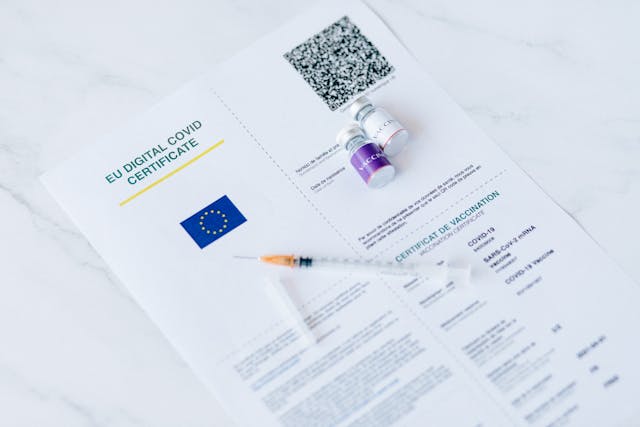
-
التكامل التكنولوجي في أوائل العقد الأول من القرن الحادي والعشرين: مع زيادة استخدام الهواتف الذكية، أدركت الشركات أن رموز الاستجابة السريعة هي أداة فعالة لربط التسويق عبر الإنترنت وخارجه.
-
جائحة كوفيد-19: أبرزت الجائحة قيمة رموز الاستجابة السريعة (QR Codes)، مما دفع استخدامها إلى مستويات جديدة حيث سعت الشركات والمؤسسات والأفراد إلى إيجاد طرق غير تلامسية لمشاركة المعلومات وتسهيل المعاملات.
-
التحول الرقمي المستمر: يضمن التحول المستمر نحو الحلول الرقمية في التفاعلات اليومية الحفاظ على أهمية وفائدة رموز الاستجابة السريعة (QR Codes) في جميع الصناعات.
تسلط هذه المعالم الضوء على الرحلة التطورية التي قطعتها رموز الاستجابة السريعة QR من مجرد تقنية متخصصة إلى أداة رئيسية معتمدة على نطاق واسع في مختلف القطاعات.
ما الذي يمكن طباعة رموز الاستجابة السريعة عليه؟
تؤثر المواد والطريقة المستخدمة في طباعة رموز الاستجابة السريعة بشكل كبير على فعاليتها وطول عمرها. يمكن طباعة رموز الاستجابة السريعة بفعالية على مجموعة متنوعة من المواد، حيث تقدم كل منها فوائد مختلفة حسب حالة الاستخدام. تشمل المواد الرئيسية ما يلي:
كيفية طباعة رمز الاستجابة السريعة على المعدن؟
تعتبر الأسطح المعدنية مثالية لرموز الاستجابة السريعة في البيئات الصناعية والخارجية نظرًا لمتانتها. تُستخدم تقنيات مثل النقش بالليزر والطباعة الأنودية لضمان قدرة رمز الاستجابة السريعة على تحمل الظروف القاسية وإمكانية مسحه ضوئيًا لفترات طويلة.
توفر الأسطح المعدنية حلولاً قوية وطويلة الأمد لرموز الاستجابة السريعة، وخاصة في البيئات الصعبة حيث تكون المتانة أمرًا بالغ الأهمية. فيما يلي بعض الاعتبارات التفصيلية لطباعة رموز الاستجابة السريعة على المعدن:
-
النقش بالليزر: تستخدم هذه الطريقة الليزر لنقش رمز الاستجابة السريعة على سطح المعدن. وهي طريقة دقيقة للغاية ويمكنها إنتاج رموز QR متينة وطويلة الأمد ومقاومة للبهتان والتآكل.
-
الطباعة الأنودية: تتضمن هذه التقنية طباعة رمز الاستجابة السريعة على سطح من الألومنيوم المؤكسد. تعمل عملية الأكسدة على زيادة متانة المعدن ومقاومته للخدش، مما يضمن بقاء رمز الاستجابة السريعة قابلاً للقراءة بمرور الوقت.
-
اختبار المتانة: قبل الانتهاء من عملية الإنتاج، من المهم اختبار رموز الاستجابة السريعة (QR) في ظل ظروف بيئية مختلفة، مثل التعرض لأشعة الشمس والرطوبة والتآكل المادي، لضمان الحفاظ على وظيفتها.
من خلال اتباع هذه الخطوات التفصيلية، يمكنك طباعة رمز الاستجابة السريعة (QR) على المعدن والتأكد من أن أسطحه متينة وفعالة.

كيفية طباعة رموز الاستجابة السريعة QR على الورق؟
تظل الورقة هي الوسيلة الأكثر شيوعًا لرموز الاستجابة السريعة نظرًا لسهولة الوصول إليها وفعاليتها من حيث التكلفة. يتضمن مفتاح الطباعة على الورق اختيار ألوان عالية التباين والتأكد من أن جودة الطباعة عالية بما يكفي لمنع التشويش، مما قد يجعل رمز الاستجابة السريعة غير قابل للمسح. فيما يلي الخطوات لضمان الطباعة الفعالة على الورق:

-
اختر البرنامج المناسب: استخدم منشئ رمز الاستجابة السريعة الذي يوفر خيارات التخصيص ومخرجات عالية الدقة.
-
اختر ورقًا عالي الجودة: تأكد من أن جودة الورق مناسبة للاستخدام المقصود، سواء للمنشورات أو الكتيبات أو بطاقات العمل. يمكن أن تؤثر اللمسات النهائية اللامعة أو غير اللامعة على وضوح رمز الاستجابة السريعة ومتانته.
-
الألوان عالية التباين: حدد ألوان الحبر التي توفر تباينًا حادًا بين رمز الاستجابة السريعة والورقة الخلفية لضمان إمكانية المسح الضوئي المثالية.
-
معايرة الطابعة: قم بمعايرة الطابعة بانتظام للتأكد من أنها تنتج مطبوعات عالية الجودة بتفاصيل حادة وألوان متناسقة.
-
اختبار إمكانية المسح الضوئي: قبل الطباعة الجماعية، اختبر رمز الاستجابة السريعة (QR) على أجهزة مختلفة للتأكد من مسحه ضوئيًا بشكل صحيح ويؤدي إلى المحتوى المقصود.
باتباع هذه الخطوات، يمكنك طباعة رمز الاستجابة السريعة (QR) على الورق والتأكد من أنه عملي وجميل من الناحية الجمالية.
كيفية طباعة رمز الاستجابة السريعة على الخشب؟
يمكن طباعة أكواد QR على العناصر الخشبية، التي تُستخدم غالبًا في الحرف اليدوية أو في متاجر التجزئة، باستخدام تقنيات مثل الختم أو الحرق، مما يوفر مظهرًا ريفيًا وعمليًا في نفس الوقت. فيما يلي بعض النصائح لتحقيق أفضل النتائج عند طباعة أكواد QR على الخشب:
-
اختر الخشب المناسب: اختر خشبًا ناعمًا وخفيف اللون للحصول على تباين أفضل وسهولة في القراءة. تعمل الأخشاب ذات أنماط الحبوب البسيطة بشكل أفضل لضمان بقاء رمز الاستجابة السريعة واضحًا وقابلًا للمسح.
-
استخدم أحبارًا أو أدوات نقش عالية الجودة: اعتمادًا على ما إذا كنت تقوم بالطباعة أو النقش، استخدم مواد تخلق علامة واضحة ومتينة. للطباعة، استخدم حبرًا يلتصق جيدًا بالخشب ويقاوم البهتان. للنقش، استخدم آلة نقش ليزر دقيقة لإنشاء خطوط نظيفة وقابلة للقراءة.
-
التشطيب والختم: ضع طبقة نهائية شفافة أو مادة مانعة للتسرب على رمز الاستجابة السريعة لحمايته من التآكل والعوامل البيئية دون حجب إمكانية قراءته.
-
اختبار الناتج: اختبر دائمًا قطعة عينة للتأكد من إمكانية مسح رمز الاستجابة السريعة واحتفاظه بسلامته بمرور الوقت. يمكن أن يساعد الاختبار باستخدام أجهزة وظروف إضاءة مختلفة في تحديد أي مشكلات محتملة.
يضمن استخدام هذه الأساليب أن رموز الاستجابة السريعة المطبوعة على الخشب ليست جذابة بصريًا فحسب، بل تحافظ أيضًا على وظيفتها.
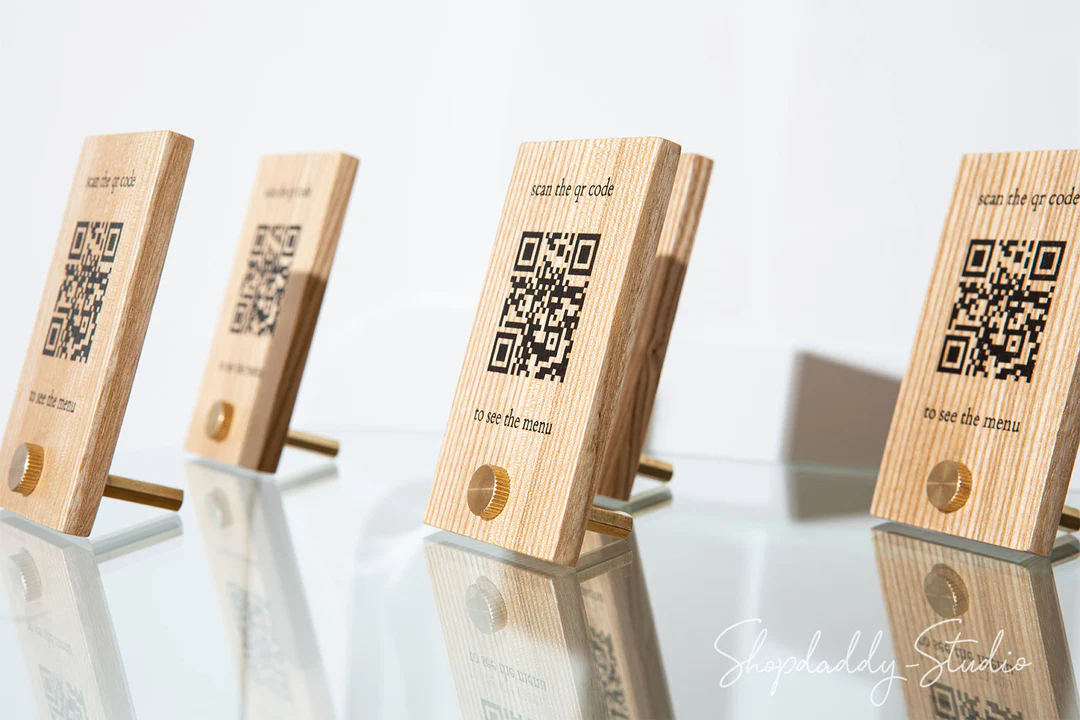
الحد الأدنى لحجم الطباعة لرمز الاستجابة السريعة
إن فهم الحد الأدنى لحجم رمز الاستجابة السريعة للطباعة أمر بالغ الأهمية لضمان فعاليته. يجب أن يكون كبيرًا بما يكفي ليتم مسحه ضوئيًا بسهولة بواسطة هاتف ذكي من مسافة معقولة. تؤثر عدة عوامل على متطلبات الحد الأدنى للحجم:

-
المسافة من ماسح رمز الاستجابة السريعة : يتطلب رمز الاستجابة السريعة الذي يُقصد مسحه ضوئيًا من مسافة بعيدة حجمًا أكبر للحفاظ على قابلية القراءة. على سبيل المثال، يجب أن يكون رمز الاستجابة السريعة الذي سيتم مسحه ضوئيًا من مسافة مترين أكبر من رمز تم مسحه ضوئيًا من مسافة 30 سم.
-
تعقيد البيانات: يجب أن تكون أكواد QR التي تحتوي على المزيد من البيانات أكبر لاستيعاب الكثافة المتزايدة دون المساس بإمكانية المسح الضوئي. إن كود QR الذي يشفر عنوان URL يكون أبسط ويمكن أن يكون أصغر من الكود الذي يحتوي على معلومات vCard أو بيانات اعتماد WiFi.
-
الظروف البيئية: يمكن أن تؤثر ظروف الإضاءة والسطح على سهولة مسح رمز الاستجابة السريعة، مما يستلزم إجراء تعديلات في الحجم. قد تحتاج الرموز الموضوعة في بيئات خافتة أو شديدة الانعكاس إلى أن تكون أكبر لضمان إمكانية القراءة.
-
تنوع الأجهزة: تختلف مستويات الحساسية باختلاف الهواتف الذكية وتطبيقات المسح الضوئي. إن التأكد من أن رمز الاستجابة السريعة كبير بما يكفي لقراءته بواسطة مجموعة من الأجهزة يمكن أن يساعد في تجنب إحباط المستخدم.
عادةً، يكون رمز الاستجابة السريعة بحجم 1×1 بوصة كافيًا لمعظم سيناريوهات المسح الضوئي، ولكن قد تكون هناك حاجة إلى تعديلات بناءً على هذه العوامل. بالنسبة للتطبيقات الأكثر تعقيدًا أو أهمية، قد تكون هناك حاجة إلى أحجام أكبر أو مستويات تصحيح أخطاء إضافية.
كيفية طباعة رموز الاستجابة السريعة QR؟
تتطلب التطبيقات والبيئات المختلفة تنسيقات مختلفة لرموز الاستجابة السريعة، مما يوفر المرونة في استخدامها. فيما يلي العديد من الطرق واعتباراتها المحددة:
كيفية طباعة ملصقات رمز الاستجابة السريعة QR؟
تُعد طباعة ملصقات رمز الاستجابة السريعة خيارًا مرنًا وقابلًا للحمل، ومناسبًا للوضع المؤقت أو الأحداث الترويجية. تشمل الاعتبارات المهمة ما يلي:
-
تخصيص التصميم :قم بمطابقة تصميم الملصق مع جماليات العلامة التجارية أو الحملة. تأكد من عرض رمز الاستجابة السريعة بشكل واضح وعدم إخفائه بواسطة عناصر تصميم أخرى.
-
تقنية الطابعة: استخدم طابعات عالية الجودة يمكنها التعامل مع مخرجات مفصلة وإنتاج ملصقات متينة. توفر الطابعات النافثة للحبر والليزر خيارات مناسبة، اعتمادًا على مادة الملصقات.
-
اختيار المواد :اختر مواد مقاومة للماء والتمزق للاستخدام الخارجي. تعتبر ملصقات الفينيل خيارًا شائعًا نظرًا لمتانتها ومقاومتها للعوامل الجوية.
-
جودة المادة اللاصقة: تأكد من أن المادة اللاصقة المستخدمة في الملصقات مناسبة للسطح والبيئة التي سيتم تطبيقها عليها. تعتبر المواد اللاصقة القابلة للإزالة مفيدة للتطبيقات المؤقتة، بينما توفر المواد اللاصقة الدائمة مزيدًا من المتانة.
-
اختبار الدفعات: اطبع دفعة صغيرة من الملصقات واختبرها في البيئة المخصصة لها للتأكد من أنها تلتصق بشكل صحيح وتظل قابلة للمسح الضوئي بمرور الوقت.
من خلال التركيز على هذه الجوانب، يمكنك طباعة ملصقات رمز الاستجابة السريعة التي تخدم الغرض المقصود منها في إعدادات مختلفة.
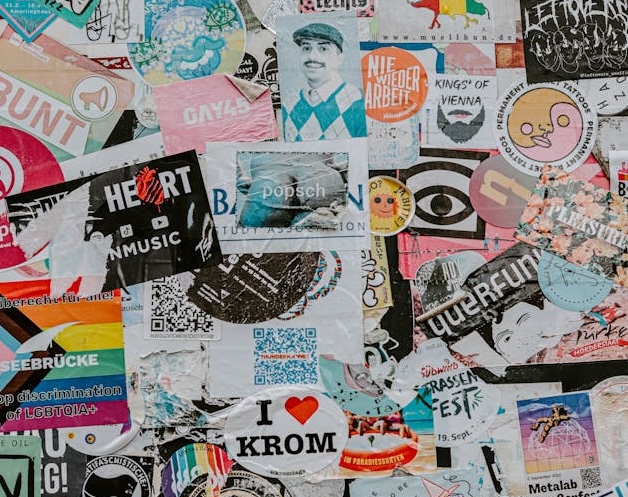
كيفية طباعة رموز الاستجابة السريعة (QR Codes) على الملصقات؟
إن طباعة رموز الاستجابة السريعة على الملصقات أمر بالغ الأهمية في التصنيع والخدمات اللوجستية، حيث تسهل إدارة المخزون والتتبع وعمليات مراقبة الجودة. تتضمن الخطوات لضمان الطباعة الناجحة على الملصقات ما يلي:

-
اختيار المواد: اختر مواد الملصقات المتينة التي يمكنها تحمل المناولة والتعرض البيئي. توفر الملصقات المصنوعة من البوليستر والبولي بروبيلين متانة ممتازة ومقاومة للرطوبة والمواد الكيميائية والتآكل.
-
توصيات الطابعة: استخدم الطابعات المصممة خصيصًا لطباعة الملصقات لضمان مخرجات عالية الجودة. غالبًا ما يتم تفضيل الطابعات ذات النقل الحراري لمتانتها ومقاومتها للتلطخ.
-
تصميم الملصق: تأكد من وضع رمز الاستجابة السريعة في مكان يسهل الوصول إليه للمسح الضوئي. قم بتضمين هامش حول رمز الاستجابة السريعة لمنع أي عناصر تصميم من التدخل في قابلية قراءته.
-
الاختبار والتحقق: اختبر الملصقات في ظل ظروف مختلفة للتأكد من إمكانية مسحها ضوئيًا طوال دورة حياتها. ويشمل ذلك التعرض لتغيرات درجات الحرارة والرطوبة والتعامل المادي.
-
الطباعة على دفعات: عند طباعة كميات كبيرة، قم بالتحقق بشكل دوري من جودة الإخراج لضمان الاتساق وسهولة قراءة رموز الاستجابة السريعة (QR).
وتضمن هذه الخطوات أن تكون علامات رمز الاستجابة السريعة (QR) موثوقة وفعالة في تطبيقاتها.
كيفية طباعة رموز الاستجابة السريعة QR على بطاقات العمل؟
تتيح طباعة رموز الاستجابة السريعة على بطاقات العمل عنصرًا ديناميكيًا، حيث يتم ربطها مباشرة بالملفات الشخصية أو مواقع الويب المهنية. لدمج رموز الاستجابة السريعة بشكل فعال في بطاقات العمل:
-
توازن التصميم: تأكد من دمج رمز الاستجابة السريعة في تصميم البطاقة دون أن يغلب على المعلومات الأخرى. ضع رمز الاستجابة السريعة في أحد الأركان أو على ظهر البطاقة للحفاظ على مظهر نظيف واحترافي.
-
الطباعة عالية الدقة: استخدم طابعات عالية الجودة لضمان وضوح رمز الاستجابة السريعة وإمكانية مسحه ضوئيًا. تعد تقنيات الطباعة الأوفست أو الطباعة الرقمية مناسبة لإنتاج رموز الاستجابة السريعة الحادة والمفصلة.
-
اختبار الوظائف: اختبر رمز الاستجابة السريعة على أجهزة مختلفة للتأكد من أنه يعمل على النحو المقصود. تأكد من أن رمز الاستجابة السريعة يؤدي إلى صفحة مقصودة مناسبة، مثل بطاقة عمل رقمية أو ملف تعريف على LinkedIn أو موقع ويب للشركة.
-
اختيار المواد: اختر مواد بطاقات العمل التي تعزز المظهر العام للبطاقة مع ضمان إمكانية مسح رمز الاستجابة السريعة. غالبًا ما تعمل اللمسات النهائية غير اللامعة بشكل أفضل من اللمسات النهائية اللامعة، والتي يمكن أن تسبب الوهج.
-
الاتساق في العلامة التجارية: تأكد من أن رمز الاستجابة السريعة (QR) يكمل العلامة التجارية الشاملة لبطاقة العمل، بما في ذلك أنظمة الألوان وعناصر التصميم.
إن اتباع هذه الإرشادات يضمن أن تكون بطاقات العمل الخاصة بك احترافية وعملية.

كيفية طباعة رمز الاستجابة السريعة للواي فاي؟
أصبحت طباعة رموز QR Code للواي فاي شائعة بشكل متزايد في قطاع الضيافة والتجزئة، حيث توفر طريقة آمنة ومريحة للضيوف للاتصال بالإنترنت. لإنشاء أكواد QR فعالة لشبكة WiFi:
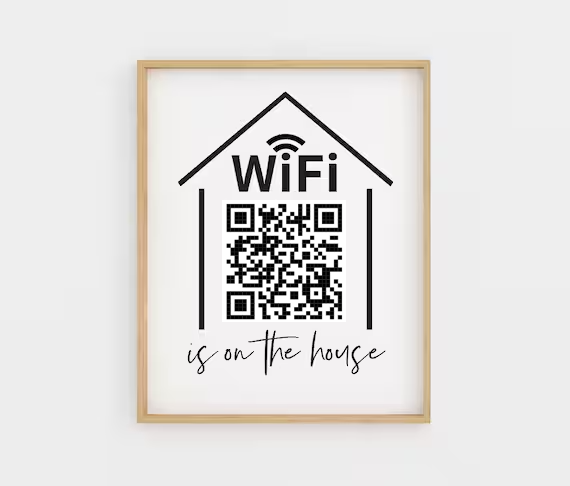
-
استخدم مولدًا آمنًا: تأكد من أن مولد رمز الاستجابة السريعة يشفر تفاصيل الشبكة لمنع الوصول غير المصرح به. توفر أدوات مثل مولد رمز الاستجابة السريعة لشبكة WiFi خيارات آمنة لإنشاء هذه الرموز.
-
اطبع بوضوح: تأكد من طباعة رمز الاستجابة السريعة بوضوح ووضعه في مناطق يسهل الوصول إليها، مثل بالقرب من المدخل أو منطقة الاستقبال. ضع رمز الاستجابة السريعة على بطاقة خيمة أو إطار صغير لسهولة الرؤية.
-
اختبار الاتصال: تأكد من أن رمز الاستجابة السريعة يعمل مع أجهزة مختلفة لضمان تجربة مستخدم سلسة. اختبر رمز الاستجابة السريعة مع الهواتف الذكية والأجهزة اللوحية المختلفة لضمان التوافق.
-
تعليمات العرض: تتضمن تعليمات مختصرة حول كيفية مسح رمز الاستجابة السريعة (QR) والاتصال بشبكة WiFi، خاصةً إذا تم وضع الرمز في منطقة عامة.
-
التحديثات الدورية: قم بتحديث رمز الاستجابة السريعة (QR) بانتظام إذا تغيرت تفاصيل شبكة WiFi لضمان استمرار وصول المستخدمين.
من خلال الالتزام بهذه الممارسات، يمكنك توفير طريقة مريحة وآمنة للضيوف للوصول إلى شبكة WiFi.
مولد رمز الاستجابة السريعة للطباعة الموصى به
يتيح استخدام أداة قوية مثل ME-QR لإنشاء أكواد QR تخصيص ودمج العديد من الميزات، بدءًا من ترميز URL الأساسي إلى تضمين الصورةأداة قوية مثل ME-QR لإنشاء رموز QR بتخصيص ودمج العديد من الميزات، بدءًا من ترميز عنوان URL الأساسي إلى تضمين الصور المتقدمة
-
خيارات التخصيص: القدرة على تضمين الشعارات وتغيير أنظمة الألوان وتضمين نماذج بيانات متنوعة. يمكن أن يؤدي تخصيص رموز الاستجابة السريعة بألوان وشعارات العلامة التجارية إلى تعزيز التعرف على العلامة التجارية وجمالياتها.
-
مخرجات عالية الجودة: تأكد من أن أكواد QR الناتجة عالية الدقة وقابلة للمسح الضوئي. تعمل أكواد QR عالية الجودة على تقليل أخطاء المسح الضوئي وتحسين تجربة المستخدم.
-
واجهة سهلة الاستخدام: تبسط عملية إنشاء وإدارة رموز الاستجابة السريعة. تتيح الواجهة البديهية للمستخدمين إنشاء رموز الاستجابة السريعة بسرعة دون الحاجة إلى خبرة تقنية.
-
التحليلات والتتبع: توفر بعض منشئي رموز الاستجابة السريعة، بما في ذلك ME-QR، تحليلات لتتبع أداء رموز الاستجابة السريعة الخاصة بك. يمكن أن توفر هذه البيانات رؤى حول تفاعل المستخدم وفعالية حملاتك.
-
إدارة البيانات الآمنة: تأكد من أن المولد يوفر خيارات آمنة لإدارة البيانات الحساسة، وخاصة رموز الاستجابة السريعة (QR code) التي تشفر المعلومات الشخصية أو السرية.
تجعل هذه الميزات ME-QR خيارًا ممتازًا لإنشاء رموز QR متعددة الاستخدامات وفعالة.
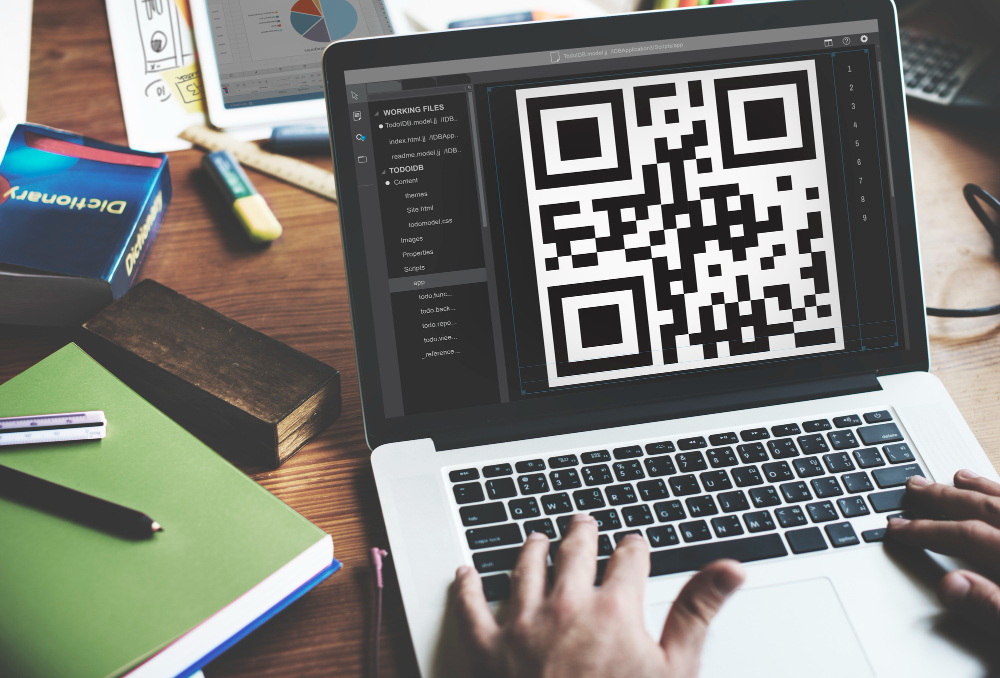
أنشئ
رمز الاستجابة السريعة الآن!
ضع رابط رمز الاستجابة السريعة الخاص بك، وأضف اسمًا لرمز الاستجابة السريعة الخاص بك، وحدد فئة المحتوى وقم بإنشائه!
أنشئ
رمز الاستجابة السريعة الآن!
ضع رابط رمز الاستجابة السريعة الخاص بك، وأضف اسمًا لرمز الاستجابة السريعة الخاص بك،
حدد فئة المحتوى وقم بإنشائه!

لماذا لا تتم طباعة رمز الاستجابة السريعة الخاص بي؟
قد تنشأ مشكلات طباعة رموز الاستجابة السريعة بسبب مشكلات مختلفة، بما في ذلك ضعف الدقة، وعدم كفاية التباين، والحجم غير الصحيح. تتضمن نصائح استكشاف الأخطاء وإصلاحها الشائعة ما يلي:






خاتمة
تُعد رموز الاستجابة السريعة أداة ديناميكية وقوية في سد الفجوة بين المساحات المادية والرقمية. يعد التنفيذ والطباعة السليمة لرموز الاستجابة السريعة أمرًا بالغ الأهمية في تعظيم فعاليتها، وضمان تحقيقها للغرض المقصود منها سواء للتسويق أو نشر المعلومات أو الكفاءة التشغيلية.
باتباع إرشادات طباعة رمز الاستجابة السريعة الخاصة بنا، يمكنك الاستفادة بشكل فعال من رموز الاستجابة السريعة لتعزيز مشاركة المستخدم وتبسيط العمليات وتوفير وصول سلس إلى المحتوى الرقمي. سواء كان ذلك للأعمال أو التعليم أو الرعاية الصحية أو الاستخدام الشخصي، توفر رموز الاستجابة السريعة حلاً متعدد الاستخدامات وفعالًا للتواصل مع جمهورك بطرق مفيدة.


